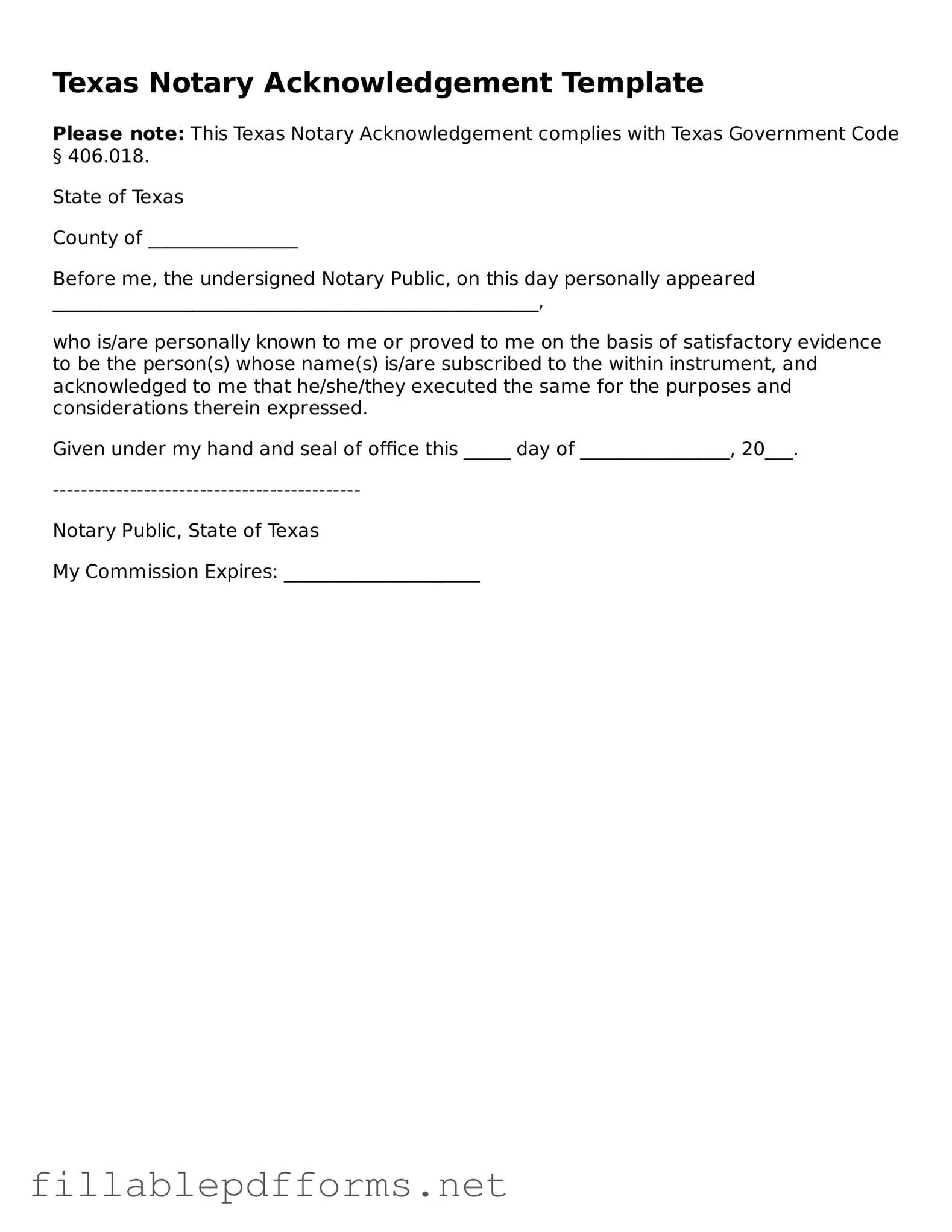Attorney-Verified Notary Acknowledgement Form for Texas State
The Texas Notary Acknowledgement form is a legal document that serves to verify the identity of individuals signing important papers. This form provides assurance that signatures are authentic and that the individuals involved have willingly entered into agreements. Understanding its purpose and proper use is essential for anyone navigating legal transactions in Texas.
Launch Editor Here
